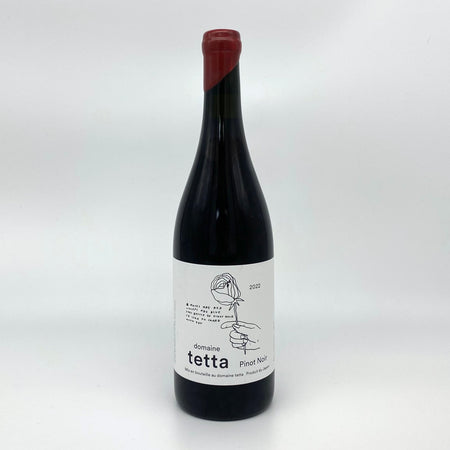domaine tetta
Niimi, Okayama
People

domaine tetta is a winery in Niimi, Okayama. “tetta” comes from the town of Tetta in Niimi, where the winery is located. The winery's representative, Mr. Ryuta Takahashi, chose this name to express his wish to "rent land in this city".
It began as a result of an incident in Ryuta's construction business. While working in the construction industry, he saw an ever-increasing amount of abandoned local land. “Couldn't I revitalise this land with my own hands?” and in 2009, he entered the agriculture industry, something he had no experience in. He decided to start by growing fresh grapes on a 2 ha plot. He later learnt that there were no vineyards for winemaking or domaine-style wineries in Okayama at the time, and in 2016 he decided to establish a winery, saying that he wanted to "regenerate the land with my own wine". Over the last 10 years since entering the industry, he has now grown 8 hectares of grapes.
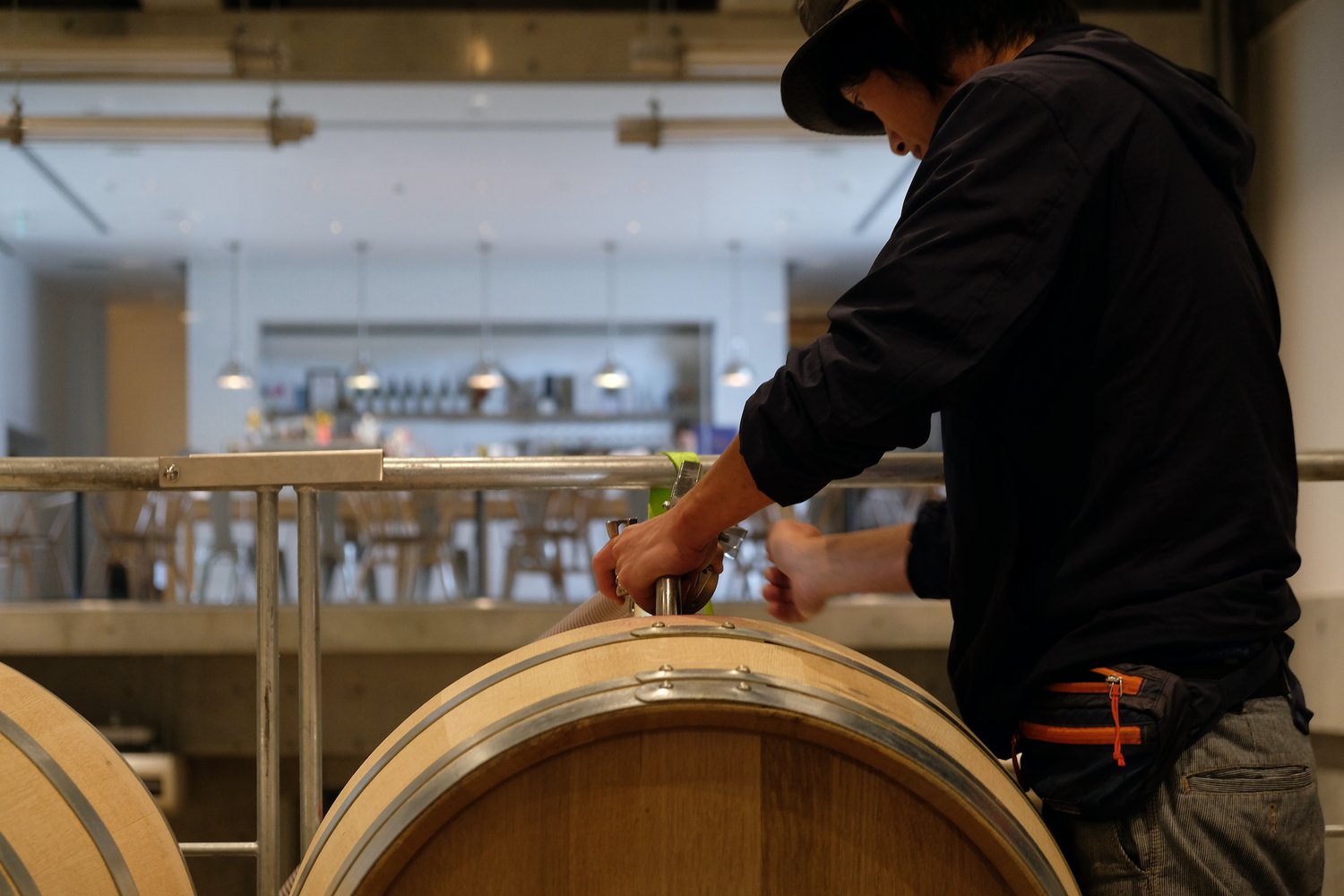
The current head of viticulture and winemaking at the winery is Mr. Yoshiya Kanno. When he was at university, Yoshiya was fascinated by the beauty of the vineyards in Burgundy, France, and decided to become a winemaker, hoping to one day be able to make wine himself and return to Europe. He then trained for two years at a winery in Yamanashi prefecture before joining the winery in 2018 and being appointed to his current position as head of viticulture and winemaking in 2020.
Vineyard
The town of Tetta, in the south of Niimi, where the winery is located, is situated on the upper reaches of the Takahashi River against the Chugoku Mountains. In winter, the temperature is low and the mountains are covered with good quality snow. Blessed with abundant nature, you can enjoy mountain stream fishing, including ayu (sweetfish) and amago (red-spotted masu trout), and agricultural products such as Chiya beef, New Pione grapes, white peaches and Momotaro tomatoes are specialities of the area. In autumn, the annual Dogeza Matsuri (festival) is an event of the Funakawa Hachimangu Shrine Autumn Grand Festival (15 October), and in winter it is a place where skiing can be enjoyed. The town of Tetta is located on a limestone karst plateau at an altitude of 400-600 m, with the town centre on a slight flat area.

The keywords to describe the vineyards are soil and wind. The soil is limestone soil (limestone and red clay) similar to that of the best vineyards in France, and is well-drained. The high altitude and cold temperatures mean relatively sunny days in a country with high rainfall such as Japan. The south-west facing slopes, cooled by winds blowing from the valley, also blow away the moisture that accumulates in the vineyard. The environment is thus very suitable for viticulture.
The vineyards currently have about 16,000 vines for wine and table grapes. There are 30 varieties of wine grape varieties alone. Ten of these varieties are mainly used for winemaking, while the remaining 20 are grown for experimental purposes.
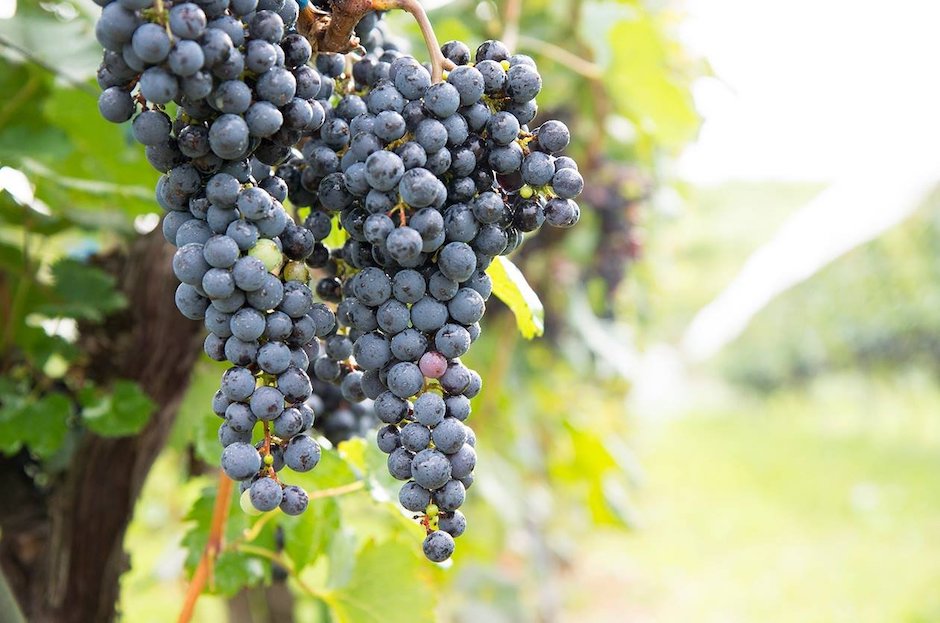
The main black grape varieties are, in descending order, Muscat Bailey A, Cabernet Franc, Merlot and Pinot Noir. White grapes include Chardonnay, Sauvignon Blanc, Riesling, Pinot Gris and Chenin Blanc. Other grapes grown as test varieties vary enormously and are released as mixed field blend wines due to the low yields of each.
In order to maintain sustainable and economical vineyards, the vineyards are cultivated with reduced use of pesticides, no chemical fertilisers and no herbicides. Pesticides are applied at only one-third of the standard set by the government. Compared to regions in Europe and the New World, Japan has more rainfall and the effects of rain (especially in the rainy season) and temperatures (hot summers) can affect the yield in any given year. Therefore, in order to reduce these climatic effects and improve the growing environment, they use rain-shelter cultivation with covered vinyl, which is very rare in the world. In this way, the grapes are able to grow in a healthy environment, which also reduces the use of pesticides.
The reason why they are so thoroughly committed to “nature” is that they want to grow grapes with as little stress as possible. We continue to take an approach that allows the grapes to show their true potential. At the same time, however, this also means that the grapes need to be monitored without missing a single moment. Yoshiya, head of viticulture and winemaking, says: "We have to keep a close eye on the grapes”.
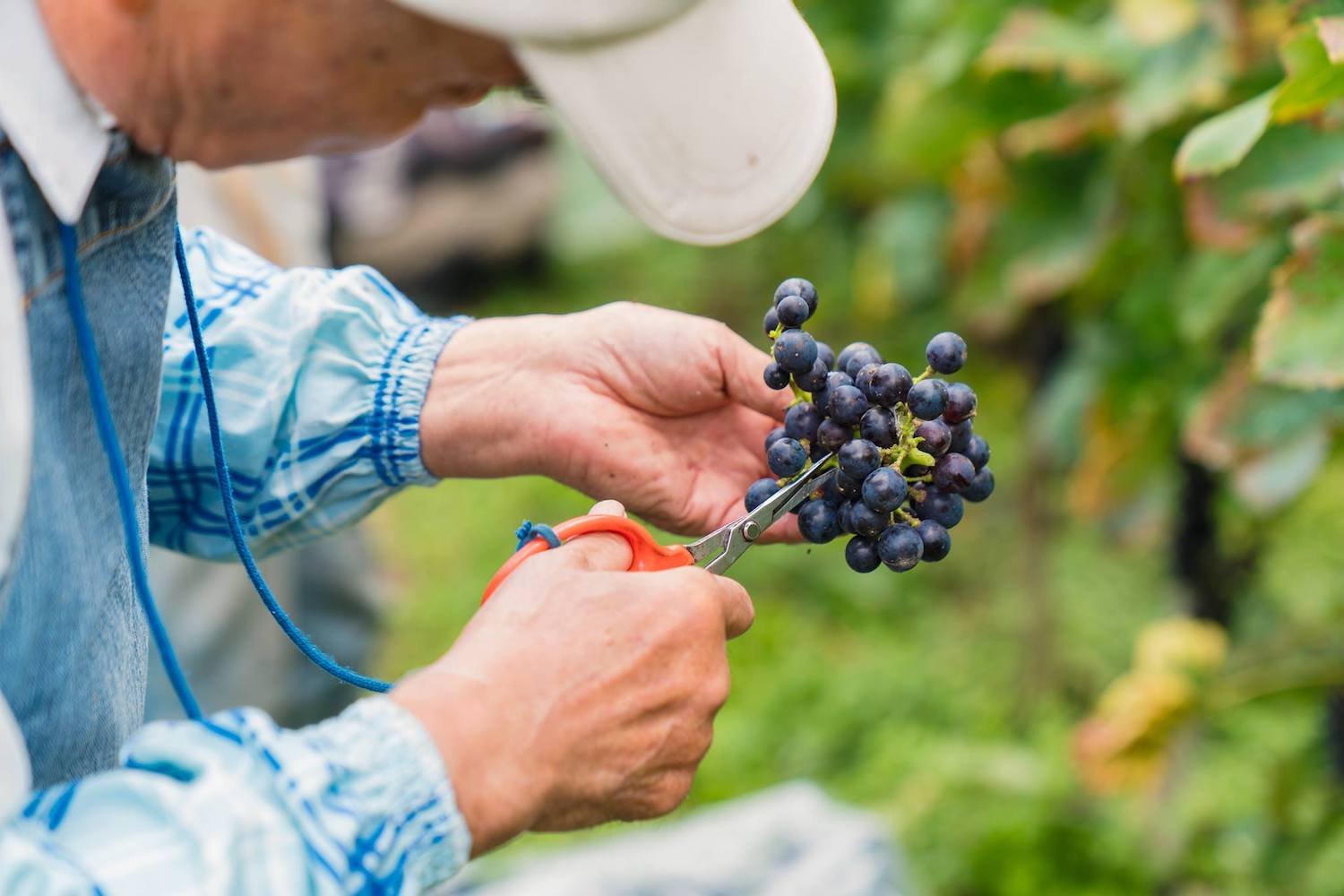
“In fact, I take tremendous care. Nature and letting go are similar but different. Before harvest, I worry about whether the grapes have been eaten by animals, so I get up in the middle of the night to go and look around the fields. I spend a lot of time in the vineyard. I carefully nurture each grape with love and respect.”
Winemaking
At the winery, they place great importance on drawing out the grapes' full potential in the winemaking process. For this reason, the process is carried out with as little human intervention as possible. The first distinctive feature is the timing of the grape harvest. Unlike most wineries, which harvest grapes in plots or rows, they observe the grapes bunch by bunch and pick only those that are properly ripe and of high sugar content. This inevitably means a longer harvest period, which is physically and mentally very demanding.
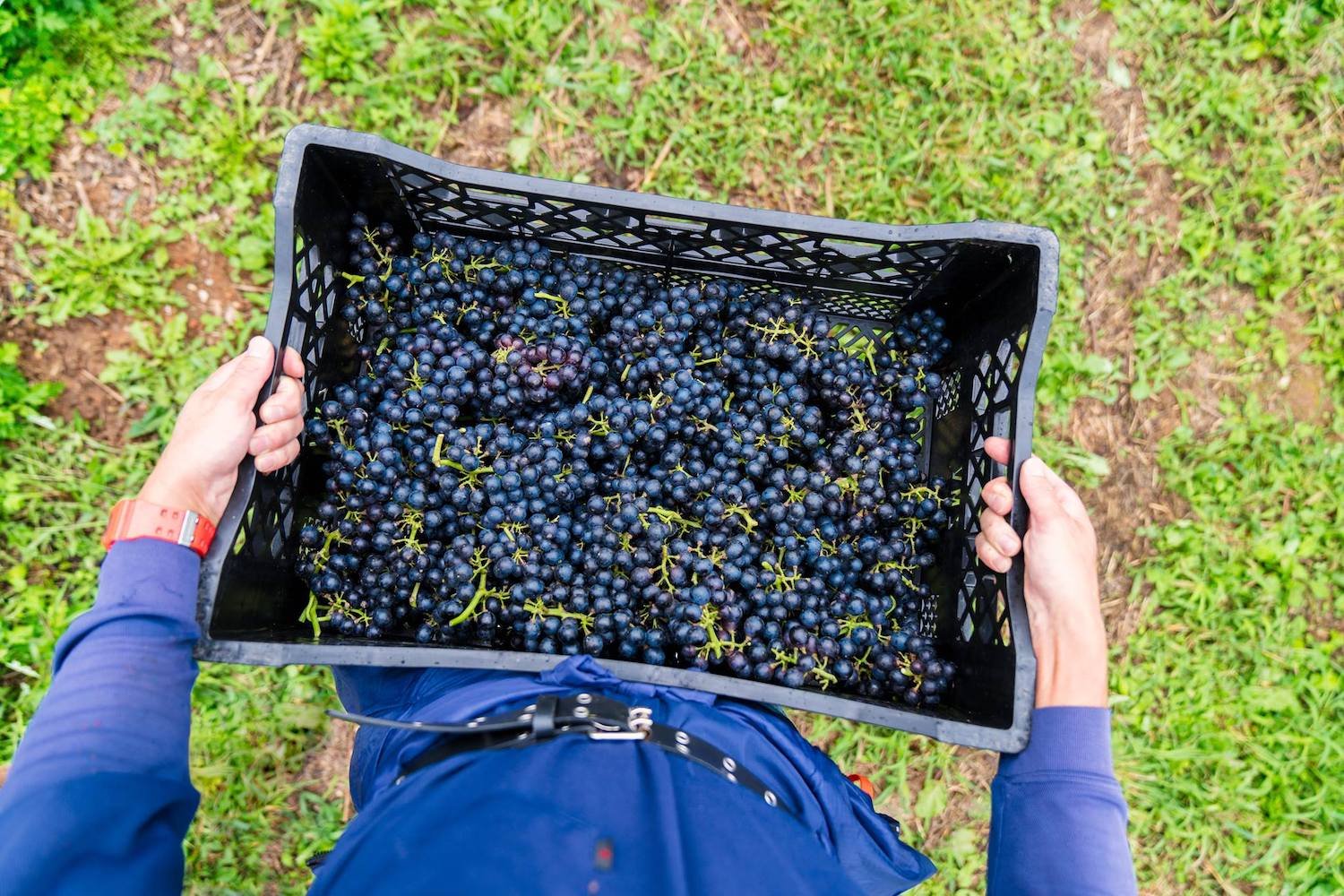
Furthermore, during harvest, many wineries remove diseased grapes during the selection process and use only healthy grapes, but at the winery, even diseased grapes are used if they are sweet to the taste. This is because we do not want to waste the effort of the grapes, even if they do not look good. The wine is then fermented slowly in tanks with wild yeasts, with no supplemental sugar, no supplemental acidity and minimal addition of sulphites (some wines have no added sulphites at all). To preserve the character of the wine, filtration is carried out with coarse filters and natural corks are used.
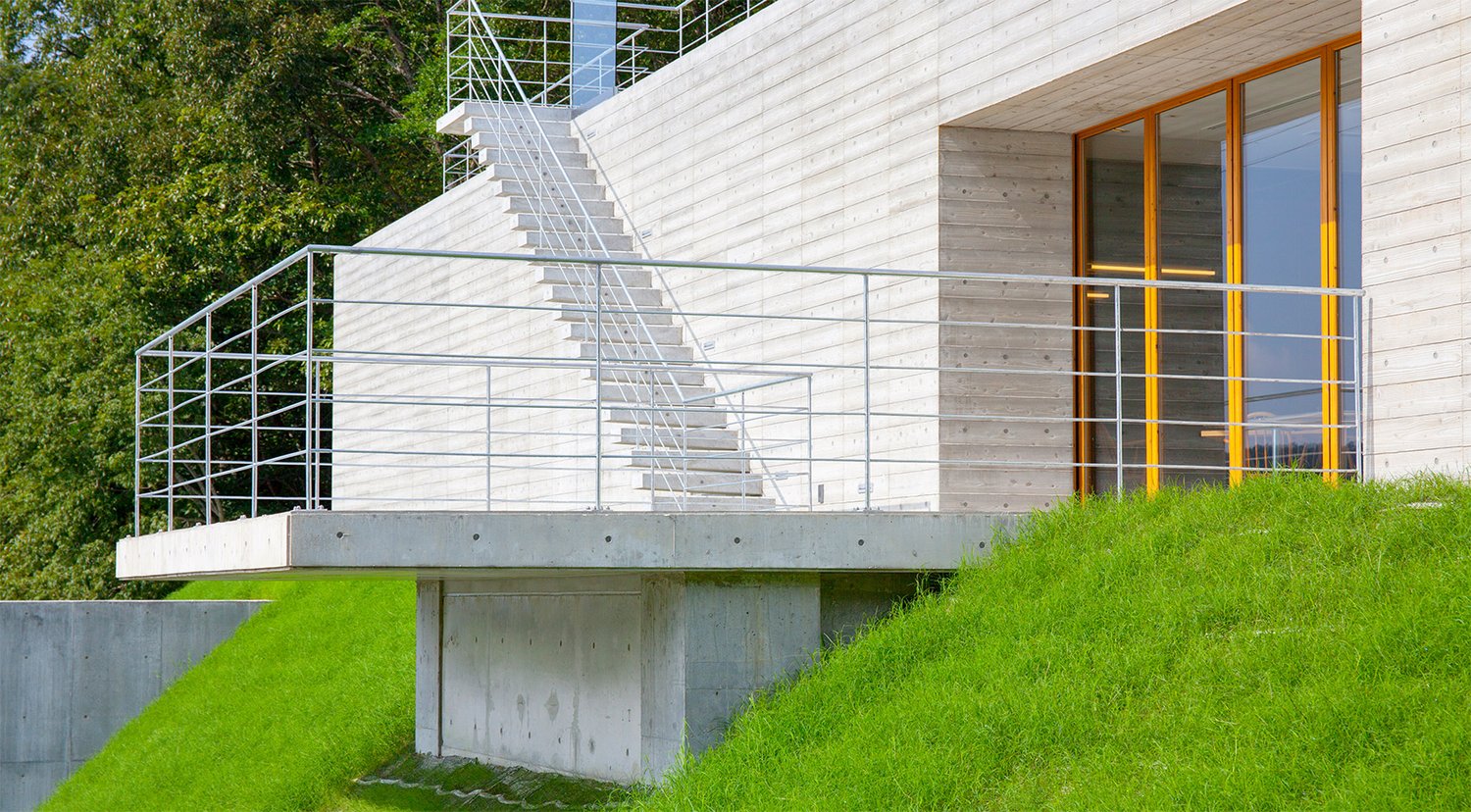
Another feature of the winery is the use of “gravity flow” instead of pumps to move the wine through these processes. Gravity flow is a method of moving grapes and wine using gravity. Compared to pumping, there is less impact and the grapes and wine can be handled extremely gently, enabling elegant and distinctive wines to be made without compromising the delicate character of the grapes. To make this possible, the design of the winery has also been adapted. Gravity flow requires a height difference, which is why the winery has a two-storey, eight-metre-high atrium.
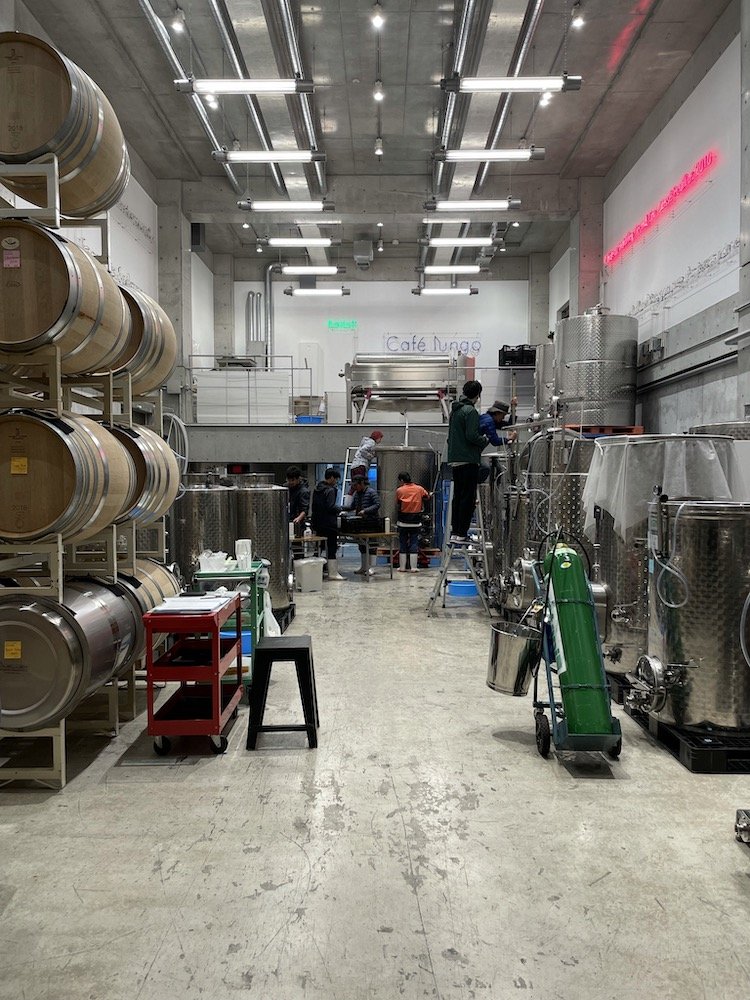
When transferring the must and wine to the tanks during the basket press, they use a small ladle to scoop and move the juice and wine slowly and carefully. They work very carefully so that the liquid doesn't ripple and make noise. This is because we believe that if it makes noise, it comes into contact with the air and is affected by oxidation. This makes fermentation slower, and thanks to less stress on the wine, fewer sulphites are used.
Yoshiya says, “I am always anxious. I fight the fear that something strange will happen to the wine. It must be rare in the world to be so nervous and take so much time to do this. I want to turn as many grapes as possible into wine".

The wine is then matured and stored in limestone mining tunnels, a resource unique to Niimi, where the lime industry has been a major industry. This has created a vibration-free, ultra-quiet “natural wine cave” environment. The temperature in the tunnels averages 12-15°C all year round, with a stable humidity of around 80%. Wines for long-term maturation are matured and stored under the best conditions.
The symbol of the winery is the panda, which is also depicted on the labels of its flagship Chardonnay wines. The panda figurine is in the vineyard, and was found in the vineyard when the company was rehabilitating abandoned land at the time of its establishment. Since then, the panda figurine has become a guardian deity of the vineyard.
Other labels also feature illustrations with plenty of characters. For example, the Cabernet Franc label features a boar that once vandalised a vineyard. The impact of the label is a good opportunity to engage in conversation with customers and to make them interested in the wine.
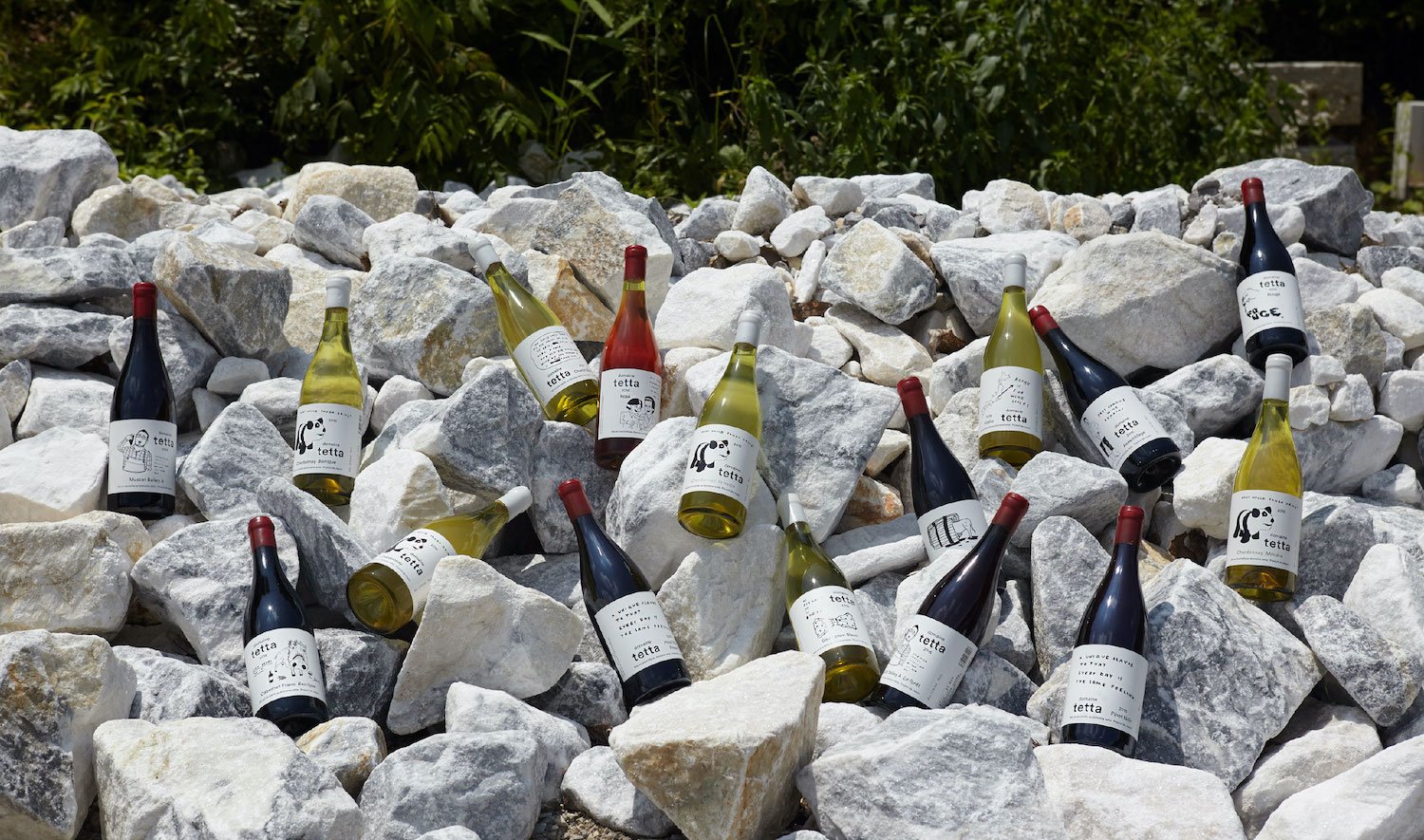
Now, their wines are gradually gaining international recognition, with an expansion into North America in 2021. Now they have decided to enter the Netherlands and Europe through GUBI GUBI to see if they can make it in the home of wine. Among other countries, they have the hope that people in the Netherlands will enjoy the wines without the preconceptions of New World wines.





